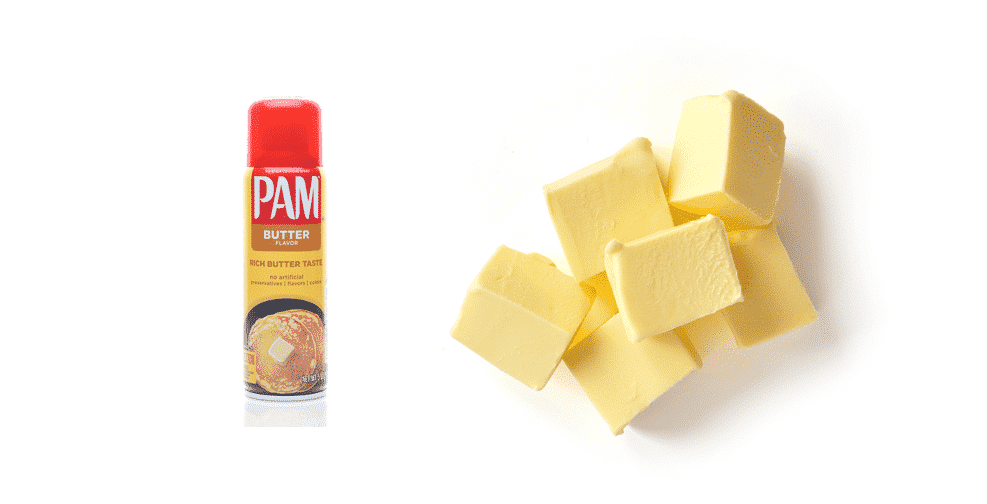
Are Pam sprays better than normal butter? You’ve come to the right place if you can’t figure out which one is better. While butter is criticized due to its high-calorie intake, many users are switching to Pam sprays to reduce calories.
Is that true? Continue reading to get a better idea regarding the two before you make a decision.
Pam vs Butter
Pam
Pam sprays are the new deal in town. You’re not alone if you can’t decide if it’s a healthy alternative or not. After all cooking oil and butter are packed with calories. But are those calories unhealthy? Well, this is a debate for another time.
If you’re planning on using Pam sprays keep a few things in mind. First, avoid using Pam sprays at all costs if you have a Soy allergy. Individuals with a soy allergy should not risk their health over a few calories. The Pam spray bottles are packed with soy lecithin. The Lecithin is used as an emulsifying agent and almost all Pam sprays use it. The purpose of using an emulsifying agent is to make sure the ingredients don’t separate.
So if you’re someone sensitive to soy, time to drop your pam spray plans. Next, most of these cans are considered unsafe due to the unregulated quantity of CFCs present in the cans. An unregulated exposure to CFCs is a health hazard and must be avoided at all costs.
The non-GMO classification of the Pam sprays is another thing you must keep in mind. Not all Pam sprays are GMO-free and if you’re avoiding GMO-based products, please make sure to buy a spray that is classified as a non-GMO product. Otherwise, look for organic products.
The spray may help you cut down a few extra calories but you’ll be compromising your cooking experience. It is slightly difficult to achieve the exact flavor using a little amount of oil.
Butter
Butter is rich in calories, unlike the Pam spray which claims to offer just a fraction of calories as compared to butter. However, there is no confirmed value of measured calorie in Pam spray. Most users keep spraying for more than a few seconds and in the process, they have no idea regarding how many calories they’re consuming.
Butter, however, has a fixed amount of calories. A teaspoon of butter has around 120 calories whereas if you keep spraying the Pam spray for a couple of seconds, you end up losing track of the calories.
When it comes to cooking, some meals require ingredients to be properly garnished in butter or oil. If you’re using Pam spray, that won’t be possible. Another reason why Pam sprays are a bad idea is when it comes to baking, Pam sprays have no utility. Except for oiling the pans, in that case, the Pam sprays do a wonderful job. Whereas butter can make pans extra greasy and oily.
Butter burns too quickly if you’re using the stove on high heat. Whereas the pan spray oil doesn’t burn that quickly. The butter taste has no substitute. If you’re trying to achieve the exact taste, then it’s advisable to not replace butter in any recipe. Butter has a standard taste that makes food taste all the better.
If you are trying to cut down the extra calories, make a deficit elsewhere. Using the Pam spray might limit your calorie intake but you’ll have no exact record of how many calories you’re consuming.
Concluding Thoughts
Pam sprays are the new talk of the town. The sprays claim to reduce your calorie intake and help you cook wisely. While that is true, keep in mind that counting calories out of an oil spray are tricky as compared to counting calories in a teaspoon. Pam sprays are also considered unsafe due to their unmonitored levels of CFC exposure. Individuals with a Soy allergy should stick to normal oil instead of Pam sprays.
Butter might be heavy on the calorie scale but you have an exact count of calories. Better stick to butter if you’re deep-frying food or cooking lengthy recipes. Pam sprays have little use when it comes to baking other than just oiling the pans. Don’t mess your baking measurement using a Pam spray.
